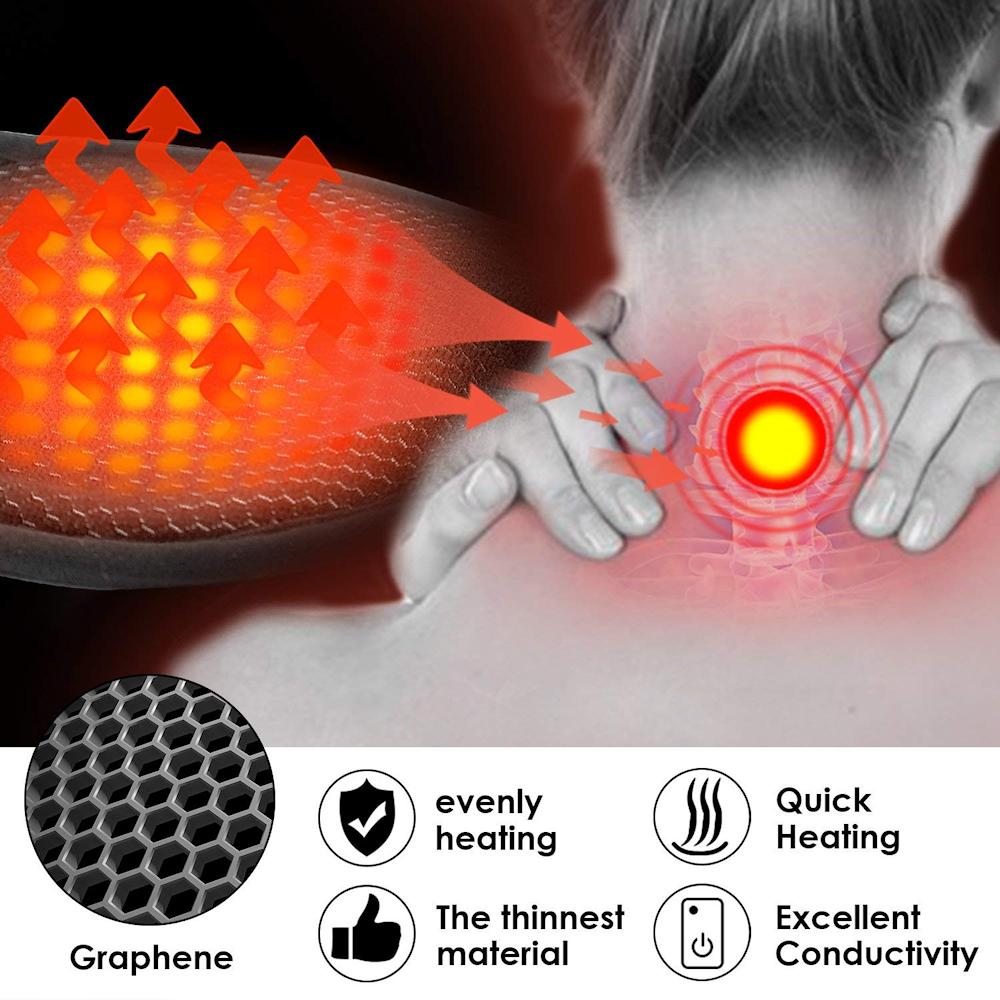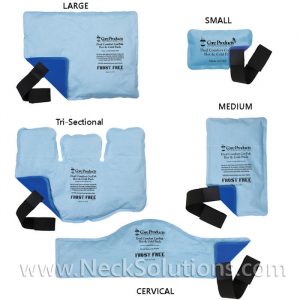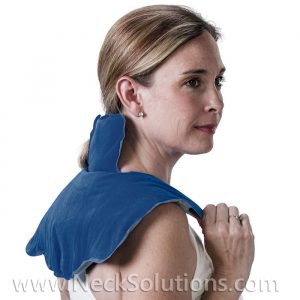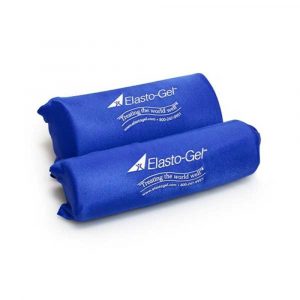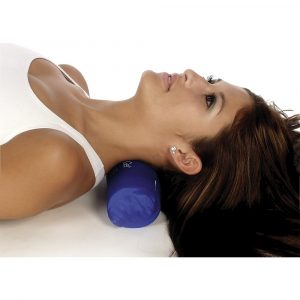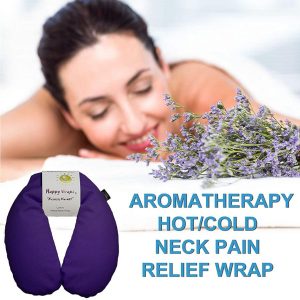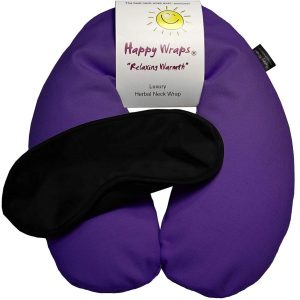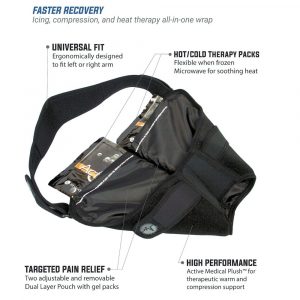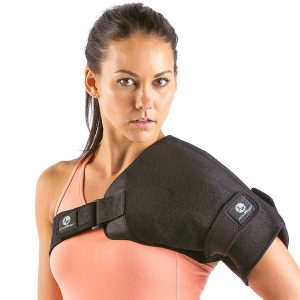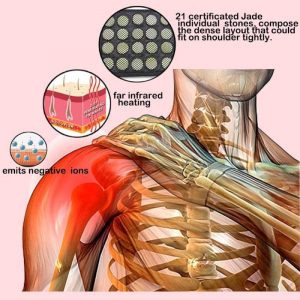Heat Therapy For Pain Relief & Healing
Heat therapy has been used throughout the ages as a method to relieve pain. It is a versatile way to help with healing as methods can be as simple as a hot bath or shower. With the advent of technology, very useful ways to apply heat to specific areas of the neck, shoulders and back can be achieved that are simple and easy to use.

Benefits Of Heat Therapy
The beneficial response of the body part is a relaxing and an analgesic or pain relieving effect. The metabolism of the body part increases and sensory nerves are sedated. As the metabolism increases, additional reactionary heat is produced, releasing substances that cause a beneficial dilation of blood vessels, which increases blood flow to the body part.
The rise in metabolism produces additional heating, which causes substances to be released to dilate blood vessels and increase blood flow. With heat wraps that are anatomically designed, it is easy to apply heat to contoured areas like the neck, shoulders and back. Just about any area of the body can use a heating pad that is designed specifically for applying heat in an efficient manner.
The increased metabolism produced by heat helps to detoxify the region. The heating promotes sweating from the effects on the skin and the fat layer beneath the skin and this further helps to remove toxic waste products that accumulate from the environment and the healing process, therefore benefiting the healing process from damaged tissues.
There are beneficial psychological effects of heat by helping to relax the area. Nerves in the skin release pain reducing chemicals as they respond by increasing the tolerance to heating. This can be beneficial in relaxing tense muscles prior to using massagers as well as using heat therapy before traction to increase effectiveness and reduce the amount of force needed to get better results.
So, heat benefits by helping to relieve muscle spasms, increases circulation of blood lymph which benefits cellular nutrition, oxygenation and detoxification, and has a sedating and relaxing effect on nerves.
- A 2015 review in Postgraduate Medicine indicates, “The physiological effects of heat therapy include pain relief and increases in blood flow, metabolism, and elasticity of connective tissues.” The authors indicate that heat wraps provide short term pain reduction and disability for those with acute low back pain.
- A 2005 study in the Journal of Occupational & Environmental Medicine showed that a continuous low level heat wrap significantly reduced intensity of pain, improved disability scores, and increased pain relief, during and after treatment for acute muscular low back pain in the workplace.
- A 2020 study in the International Journal of Environmental Research and Public Health showed that therapeutic heat in addition to neck stabilization exercises showed better results regarding pain, disability and muscle stiffness for chronic nonspecific neck pain.
While heat is not generally recommended for acute injuries, the above noted literature indicates low level heat for an extended period. While we do want to be careful and apply according to the condition, it can be noted that other forms like Chinese medicine often use heat for acute injuries. In martial arts, we would heat and herbal liniment and apply to acute injuries like bruises.
Heat Therapy Application
If using heat at too high of a temperature or for too long, it can produce swelling. This can actually cause damage to an injured area that already has an accumulation of swelling. Typically, this is when an injury first happens. Like a swollen ankle, you should not use heat for the first couple or few days, until the swelling is under control.
For the first few days, use ice. If you cannot tolerate ice applications, there are topical pain relief products. Some of these have cooling properties and are easy to use. Pain patches or liniments can be applied that can help reduce swelling and provide some relief. These methods help to provide an alternative to ice.
Since heat is relaxing and sedates nerves, one might think that if 10 minutes feels good, a half hour would be better. Keep in mind that heat therapy can produce negative effects and prolong tissue healing if overused or used on a recent (acute injury), especially with dry forms of heat. Depending on the product, the time you apply heat should be dictated by the manufacturer’s or your health care professional’s recommendations. The temperature of heat also depends on tolerance.
The best heat applications are a hot bath or shower, however, the benefits of this type of moist heat can be achieved by using moist heating pads. These often allow you to directly control the temperature and time of application. One of the more recent developments is the advent of deep penetrating heat wraps using infrared technology. This allows a deeper heat treatment for joints and deeper muscles.
These also use less heat temperature to achieve this deeper penetrating heat, so it is a great from of heat to use in warmer climates. These heat wraps are anatomically designed to provide efficient therapy to specific body parts, like the neck & back, shoulder and more. They also are available with battery power, so you can have freedom of motion during application.
In general, heat is safe when applied with care. However, if you are not sure, always check with a health care professional. Heat should not be used on recent or acute injuries or where there is significant localized swelling or bleeding. Care needs to be exercised over areas that have altered sensation as in diabetes or when a topical ointment is used. You should not use heat over areas of skin damage, like rashes or areas of sunburn. Heat can be harmful if used over areas of metal, whether it is an implant or jewelry. Do not use heat over the uterus of a pregnant woman.
Beyond Heat Therapy – Keeping Warm
Exposure to cold can cause pain along with cold environment exposure at work or leisure time. It is also known to reduce both cognitive and physical performance. Working in cold environments is associated with an increased prevalence of neck, back and shoulder pain. It is important not only for locally applied heat in healing, but to keep warm in general in cold places.
- A 2019 study in BMJ Open found working in a cold environment at least 25% of the time was associated with chronic pain at 3 or more sites and with neck, shoulder and leg pain. Those working in a cold environment and felt cold at work had higher odds for neck, shoulder, arm, back, hip and leg pain.
And in cold weather don’t forget a scarf for your neck.
